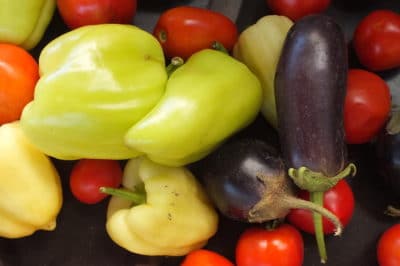Four Common Nightshade Crops
The nightshades include the following four crops, popular with home gardeners. Although each of them is different, their structures and growing conditions are similar. They’re also susceptible to the same diseases and insects.
- Eggplant
- Tomatoes
- Green Peppers
- Potatoes
All about the Nightshade Family
Most gardeners plant at least one of the nightshades in the spring. Whether you choose eggplants, tomatoes, green peppers, potatoes or all four, you’re sure to have baskets of fresh fruit during the summer. While eggplants, tomatoes and green peppers grow from seeds, potatoes grow from ‘seed potatoes’, which are one-inch chunks of potato with a few eyes on them.
Climate Considerations for Nightshades
Unlike eggplants, tomatoes and green peppers, their potato cousin needs cool soil to thrive. This is why potatoes grow well in northern states, like Maine and Idaho, as well as Canada. On the other hand, eggplants, tomatoes and green peppers need temperatures from 70°F (21°C) to 85°F (29°C) to grow successfully. Of all the nightshades, eggplants require the most heat, while tomatoes and peppers wilt if the temperature rises above 90°F (32°C). All nightshades need full sun and frequent watering.
Nightshades Need Room to Grow
Nightshades grow fast and tall, so your garden needs room for them.
Tomatoes
Most tomato varieties need cages, trellises or stakes to keep them upright. The weight of the tomatoes can pull the plants to the ground.
Eggplants
Eggplants require at least 2 feet between the rows. Depending on the variety you plant, they can grow into large bushes, and some may need stakes.
Green Peppers
As with eggplants, green peppers need 2 feet between the rows. Some varieties grow tall, and may need staking as they develop.
Potatoes
Your potatoes need hills of dirt and mulch from 2 to 3 feet apart. As the shoots grow taller, mound more dirt and mulch around them.
Nightshade Pests
Members of the nightshade family suffer from similar pests. These pests include the Colorado potato beetle, flea beetle, aphids, tomato hookworm, whiteflies, snails and slugs. Planting companion plants that repel pests is helpful in preventing damage to the plants.
Unusual Nightshades
Although eggplants, tomatoes, green peppers and potatoes are common nightshades, several flowers and other plants belong to this family, as well. One familiar nightshade is tobacco (Nicotiana), while two tropical bushes that produce fragrant flowers, Datura and Brugmansia are also nightshades.












